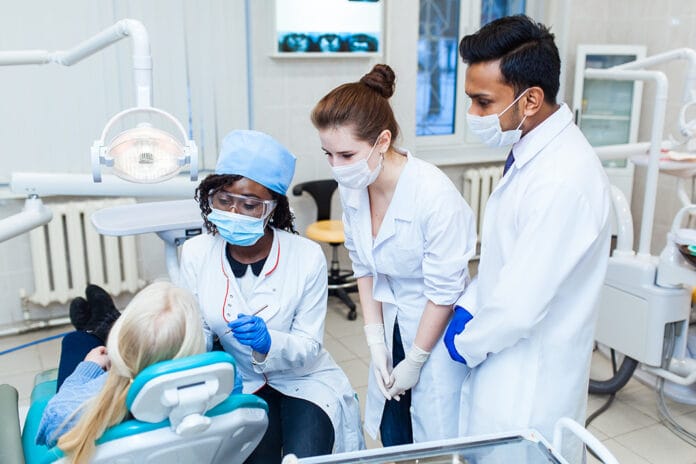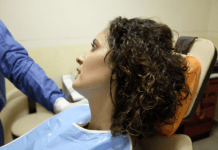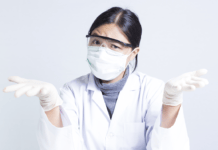Are you aware that dentistry is the only area of health care that requires a live board patent exam for licensure? In no other area of health care is this an acceptable practice.1 Historically, we have been using live patients since the early 1900s.2 The consistent use of live patients for so many years has made shifting away from this practice difficult for some dental professionals to understand.
In this article, I hope to highlight the need to transition away from live board patients and the ethical conflicts associated with using live board patients.
I find it interesting that some dental professionals have adopted the idea that if they had to go through live board patient clinical exams, all graduating hygienists and dentists should be required to do the same, regardless of the ethical conflicts that arise from live board patient exams. It’s the old “if I had to do it, you should have to do it” trope. This is a much more complex situation than just the idea that manikin exams are “easier.”
Though I had a live board patient for my clinical exam, I have also had the privilege to access a manikin that was used for a clinical exam. I can assure you, it was not “easy” to remove the “calculus” on that manikin. I can only imagine how difficult it would have been if I wasn’t a seasoned hygienist fresh out of dental hygiene school. Accordingly, I would like to suggest we not make assumptions about the ease or difficulty of the manikin exam; that is really the least important aspect of this topic.
Failed Procedures
The first ethical dilemma is the risk to the patient if/when there is a failed procedure. This applies to the dental clinical exam as well as the dental hygiene clinical exam. What happens to the patient if the treatment they are receiving is determined to be a failure? The patient must then seek out a licensed dentist or dental hygienist to repair or complete the treatment.
For example, non-surgical periodontal therapy was a required element of my clinical exam. If I had failed to perform the task properly, my patient would be at risk of disease progression. To avoid tooth loss or any other complications, the patient would be required to have the treatment successfully completed elsewhere, possibly at their own expense. The patient would also endure the stress and time of having the treatment completed properly.
Dental and dental hygiene students often carry malpractice insurance. A patient could file a civil suit to be compensated for damages. However, the process can be time-consuming, and the patient may still need to have treatment completed properly before any awards are distributed.
Violation of the Patient’s Bill of Rights
The use of live board patients violates the Patient’s Bill of Rights and arguably one aspect of the Belmont Report. The Belmont Report is a summary of the National Research Act that was signed into law on July 12, 1974. It includes the basic ethical principles that should be followed when using human subjects for research.
Clinical boards are essentially testing for competency, yet they are also testing for incompetency, making this type of testing out of line with patient expectations.3 Live board patient exams also violate the beneficence rule of the Belmont Report. This aspect of the Belmont Report states, “Beneficence requires protecting individuals from deliberate and unnecessary harm, as well as maximizing benefits, and minimizing harms, and is applied to clinical research through careful risk/benefit evaluation.”4
Though the clinical boards may not be classified as “clinical research,” they certainly meet the criteria. The Association of American Medical Colleges Task Force on Clinical Research defines clinical research as “a component of medical and health research intended to produce knowledge essential for understanding human disease, preventing and treating illness, and promoting health.” Clinical knowledge is an aspect of this definition that applies to the live patient clinical board exam.4
Beneficence is also part of the American Dental Hygienists’ Association (ADHA) Code of Ethics, which states, “We have a primary role in promoting the well-being of individuals and the public by engaging in health promotion/disease prevention activities.”5 Yet the very essence of the live patient board starts soon-to-be dental hygienists off by violating this code.
In some cases, the live patient board exams can expose an individual to unnecessary harm not only through failed procedures but also due to delayed treatment. How long do we look for that perfect board patient? Once we have found them, how long must this patient wait for treatment? All in the name of determining a student’s competency, which can and has been done through clinical courses required by both dental and dental hygiene programs.
Reflective of Competency or Good Testing Practice?
In no way does one clinical exam on a live patient properly reflect an individual’s competency. Consider the number of clinical exams (mock boards and clinical competencies) we must pass in dental hygiene school, each very detailed. The ability to successfully pass these exams provides a better picture of competency than a single exam that may not be in an ideal setting.
The single exam also induces a high level of stress, which likely compromises the individual’s abilities to perform procedures at the level they would in a more comfortable environment. Many exams are conducted in different settings that are not familiar (different equipment, different setup of the operatory, etc.).
Additionally, students who need to travel for their clinical board must stay in hotels the night before the exam after traveling to reach their destination. All these factors add to the already very stressful looming exam that will determine their ability to become licensed, regardless of how well they have done throughout their dental hygiene program. Treating a live patient in such a stressful environment can also be a liability.3
Furthermore, standardizing live patients is impossible, making the test practice unfair and possibly biased in terms of selection bias. I’ll use myself as an example here. My board patient was my brother, which means he was willing to tolerate discomfort and inconvenience because he had my best interest at heart. However, some of my fellow classmates had to use perfect strangers as their board patients, leaving them more stressed and with patients less tolerant of discomfort and inconvenience. In no way is this an equal playing field.
Conclusion
In closing, I would like to highlight the eight arguments against live patient clinical board exams according to Buchanan (1991):2,7
- Standardizing human subjects anatomically, physiologically, and psychologically is impossible
- Diminishing supply of clinical patients with specific examination needs that meet criteria
- Delays in treatment as necessary to treat patients for clinical exams
- The expense of using human subjects: fees paid to patients, compensation for transportation, and living expenses
- Patient discomfort (length of examination procedures)
- Risks associated with procedures
- Liability of unacceptable treatment/inappropriate care
- Liability of treating a human subject in a highly stressful environment
Though these arguments are over 30 years old, they still stand and are very relevant to our current situation. The idea of doing away with live patient clinical board exams has been supported by the American Dental Association and the ADHA since 2017 and 2018, respectively. The onset of the pandemic forced the hands of many states and dental hygiene programs to move forward with implementing manikin exams.
In a national survey of dental hygiene program directors published in 2015, the results showed that “most dental hygiene directors agree that graduating from a CODA-approved dental hygiene program and passing the national board examination would ensure that a graduate has achieved clinical competency and readiness to provide comprehensive patient-centered care as a licensed dental hygienist.”7
The concerns expressed by fellow dental hygienists that students were not held to the same level of scrutiny with a manikin exam as a live patient exam were abundant. This led me to believe there was a huge misunderstanding regarding the ethical dilemma we face by continuing to require live patient clinical board exams.
If you find yourself in the #TeamLivePatient camp, I implore you to consider the ethical violations we are making as health care providers as well as the patient’s well-being. In my opinion, there simply is no valid argument for continuing live patient board exams, and it is time to move on and make the change to manikin exams permanent.
Before you leave, check out the Today’s RDH self-study CE courses. All courses are peer-reviewed and non-sponsored to focus solely on high-quality education. Click here now.
Listen to the Today’s RDH Dental Hygiene Podcast Below:
References
- Lasky, R.E., Shub, J.L. Dental Licensure Reaches a Crossroads: The Rationale and Method for Reform. J Dent Educ. 2003; 67(3): 295-300. https://pubmed.ncbi.nlm.nih.gov/12665058/
- Buchanan, R.N. Problems Related to the Use of Human Subjects in Clinical Evaluation/Responsibility for Follow-up Care. J Dent Educ. 1991; 55(12): 797-801. https://pubmed.ncbi.nlm.nih.gov/1765603/
- Formicola, A.J., Shub, J.L., Murphy, F.J. Banning Live Patients as Test Subjects on Licensing Examinations. J Dent Educ. 2002; 66(5): 605-611. https://pubmed.ncbi.nlm.nih.gov/12056765/
- Gallin, J.I., Ognibene, F.P., Johnson, L.L. (2017). Principles and Practice of Clinical Research (4th ed.). Academic Press.
- ADHA Code of Ethics. (2022, June). American Dental Hygienists’ Association. https://www.adha.org/wp-content/uploads/2023/01/ADHA_Bylaws_Code_of_Ethics_FY22.pdf
- Use of Human Subjects in Clinical Licensure Exams: A White Paper of the American Student Dental Association. (2016, October 31). American Student Dental Association. https://www.asdanet.org/docs/advocate/issues/asda_white-paper_licensure_web_final.pdf
- Fleckner, L., Rowe, D. Assuring Dental Hygiene Clinical Competency for Licensure: A National Survey of Dental Hygiene Program Directors. Journal of Dental Hygiene. 2015; 89(1): 23-33. https://jdh.adha.org/content/jdenthyg/89/1/26.full.pdf












